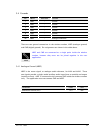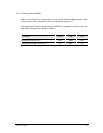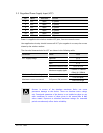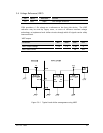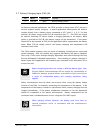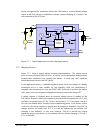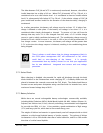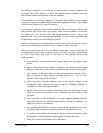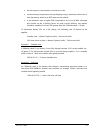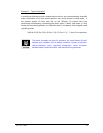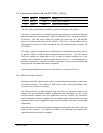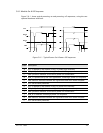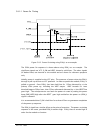
LZT 123 1836 39
The delta between CHG_IN and VCC is continuously monitored; however, the valid to
invalid detection has a delay of 46 ms. When CHG_IN exceeds VCC by 150 mV, it is
considered to be at a valid relative level. It is considered to have an invalid relative
level if it subsequently falls below VCC by 50 mV. If the relative voltage of CHG_IN
goes invalid and remains invalid for the duration of the detection delay, charging is
terminated.
As a safety precaution, the battery cell voltage must be at least 2.5 V before fast-
charge is allowed to take place. If the battery cell voltage is less than 2.5 V, it is
considered either deeply discharged or shorted. To protect a Li-ion cell from the
damage that may occur if it is fast-charged from this state, a 3.6 V trickle-charge
source is used to safely condition the battery cell. The conditioning charge current is
limited to 50 mA, which for most Li-ion cells is 10% or less of the recommended CC
fast-charge current. In most instances, the battery cell voltage will be greater than
2.5 V at the time the charge request is initiated, resulting in the conditioning phase
being skipped.
There is always a small chance that the charge management block in
the GS64 power management ASIC will malfunction or fail, which
could lead to over-charging of the battery. It is strongly
recommended that any battery chosen for use with your application
has its own additional integrated over-current and over-voltage
protection.
5.7.2 Series Diode
When charging is disabled, the potential for rapid cell discharge through the body
diode inherent in the Enhancement-mode charging FET, a Schottky diode must be
placed in between the external source and the CHG_IN pin. The diode should have a
forward current and power dissipation rating consistent with its intended use, and a
maximum forward voltage drop of 0.6V.
5.7.3 Battery Selection
Whilst there are several rechargeable battery technologies commercially available,
including Nickel Cadmium (NiCd), Nickel Metal Hydride (Ni-MH), Lithium-Polymer (Li-
Polymer) and Lithium-Ion (Li-Ion), the only technology recommended and supported
for use with the GR64 is Li-Ion. Li-Ion provides a good combination of high energy
(3.7v) and long cycle life, which lead to low overall energy cost.
The weight of lithium ion batteries is approximately one half compared with a nickel
cadmium or nickel metal hydride battery of similar capacity. The volume of lithium
ion batteries is 40 to 50% smaller than that of nickel cadmium, and 20 to 30% smaller
than that of a nickel metal hydride.
CAUTION




